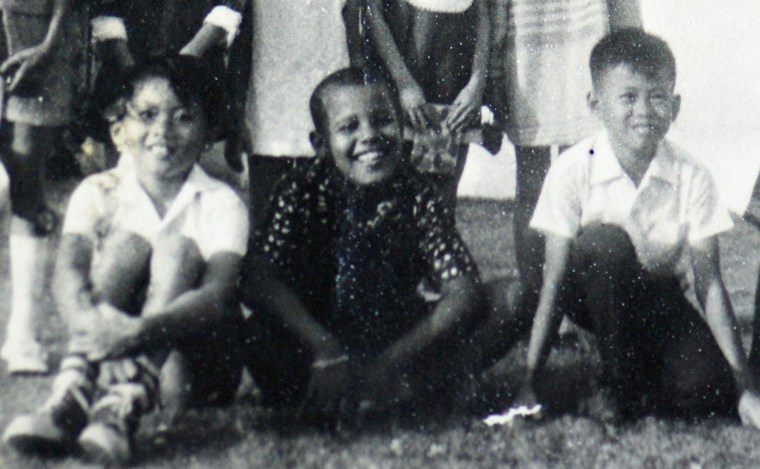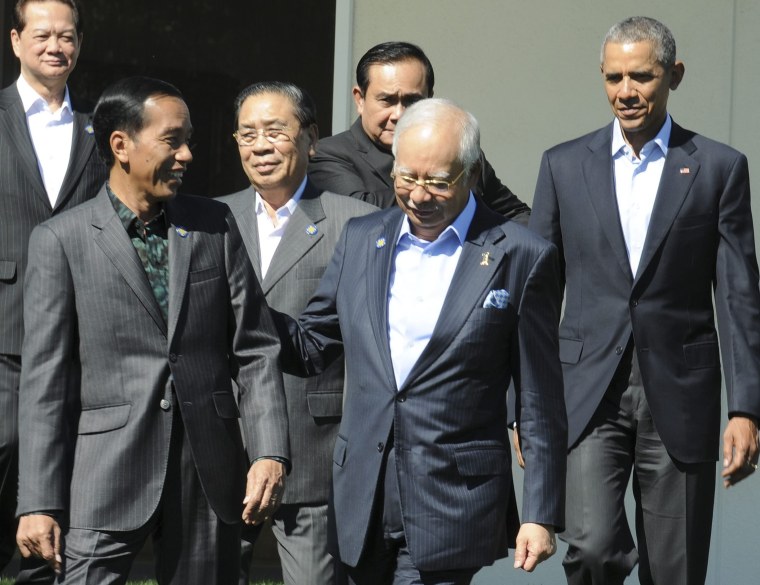President Barack Obama’s so-called pivot in U.S. foreign policy toward the Asia-Pacific region is an attempt to deepen ties in a part of the world that amounts to a major economic force.
So far, Obama has made seven trips to the region — one for each year he’s been in office.
That will continue this year, when Obama will travel to Vietnam in May, and then to Laos in the fall, becoming the first U.S. president to visit the landlocked communist country.
And in his opening address to a gathering of several Southeast Asian leaders this week, Obama spoke fondly of the region and his time in Indonesia as a young boy.

“As president, I’ve insisted that even as the United States confronts urgent threats around the world, our foreign policy also has to seize on new opportunities," Obama said Monday during a two-day summit in the Southern California desert community of Rancho Mirage. "And few regions present more opportunity to the 21st century than the Asia Pacific.”
“That’s why, early in my presidency, I decided that the United States, as a Pacific nation, would rebalance our foreign policy and play a larger and long-term role in the Asia Pacific,” he continued.
The president’s upcoming itinerary has come into focus as he wrapped up a meeting Tuesday of the Association of Southeast Asian Nations, or ASEAN — 10 diverse countries that form an alliance with the United States in what has become a high priority for Obama.
Related: Obama in Asia: Focus on Economy, Trade and Legacy
The Asian countries are: Brunei, Cambodia, Indonesia, Laos, Malaysia, Myanmar (formerly Burma), the Philippines, Singapore, Thailand and Vietnam.
Some of the nations are small, some large. Some are rich, some poor. And some are democratic, while others are far from it.
The combined population of these nations is about twice that of the U.S. Together ASEAN has become America’s fourth-largest trading partner — trade that the Obama administration says supports more than 500,000 American jobs.

Four members of the group have joined the president’s Trans-Pacific Partnership, a massive trade deal with 12 Pacific Rim nations that will be a seminal achievement for Obama if he can convince Congress to ratify the agreement.
The U.S. now has what’s called a “strategic” relationship with ASEAN, and the federal government expects to have a long-term and significant partnership with this coalition of nations.
“This is part of who I am, and how I see the world.”
For the first time, ASEAN is meeting on American soil, at a storied site known as the Sunnylands.
It was the desert estate of the late billionaire Walter Anneneberg and wife Leonora — an expansive 200-acre retreat frequented by Hollywood royalty and numerous former U.S. presidents, sitting at the intersection of Bob Hope and Frank Sinatra Drives in Palm Springs.
It has also been called the “Camp David of the West.” Along with its relaxed atmosphere for less formal talks with world leaders, Obama is said to be particularly fond of the nine-hole golf course.
But there are tensions beneath the surface as the leaders gathered in the bucolic setting this week.
Related: China 'Will Not Initiate Military Conflict' Over Island Disputes: Expert
Several ASEAN members have territorial disputes with China, and the U.S. is concerned about China’s efforts to block the free movement of ships thru the South China Sea.
America sees the group of 10 nations as a geopolitical counterweight in the region to China and its growing economic and military power.
When the leaders got down to business, Obama laid out their goals.
“Together we can continue to increase the trade and economic partnerships that create jobs and opportunity for our people,” he said.
He added, “Together we can also continue to increase our security cooperation to meet shared challenges.”
Among the issues that were on the summit agenda were the territorial disputes with China, climate change and fighting global extremism. ISIS claimed responsibility after terrorists attacked Indonesia’s capital, Jakarta, in January.
As the summit ended Tuesday, Obama said the group had agreed on a number of "key principles" that will increase trade, increase security in the region and "expand the rule of law and universal human rights." That was a reference to member nations with strained relations between their governments and the people, such as in Burma, Thailand and Cambodia.
"I believe this summit has put the U.S. and ASEAN on a new trajectory for greater heights in the years ahead," a confident Obama said.
Despite all of that, many Americans may still question why Obama has worked so hard to cultivate relationships with 10 nations in Southeast Asia that seem so far away.
At a summit in Kuala Lumpur last November, speaking at a town hall meeting, Obama reminded his audience that he had spent several years as a young boy in that part of the world in Indonesia. The president also talked about how his late mother had spent years working in rural villages.
“This is part of who I am, and how I see the world,” he said.
